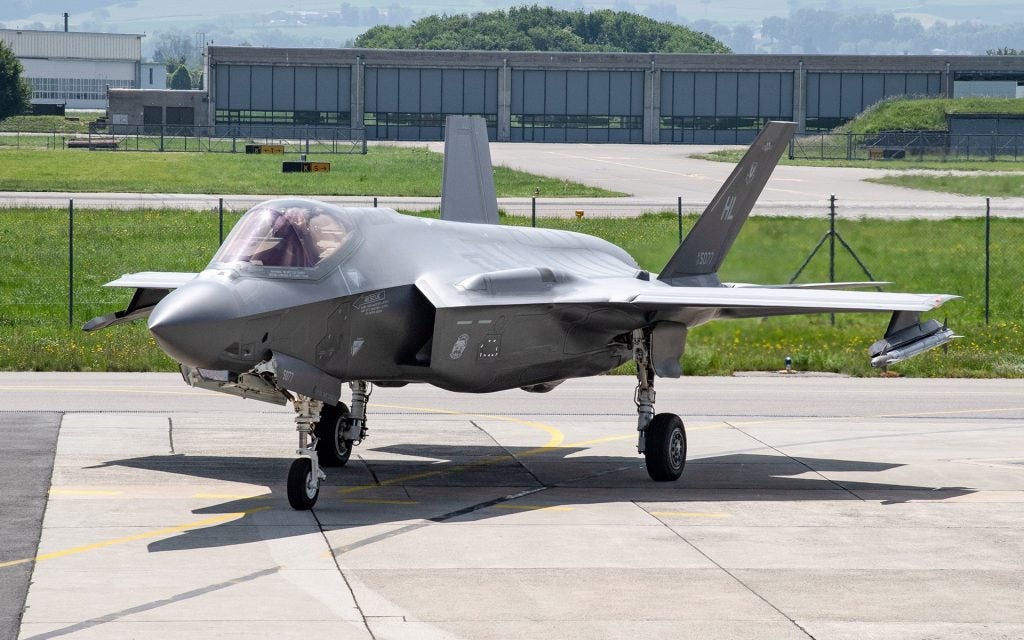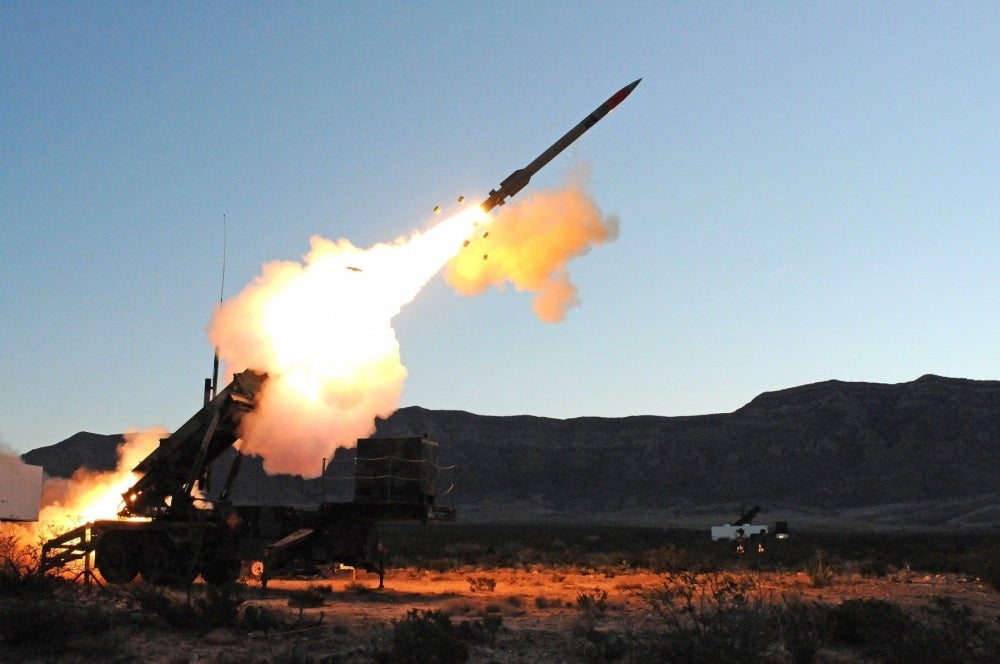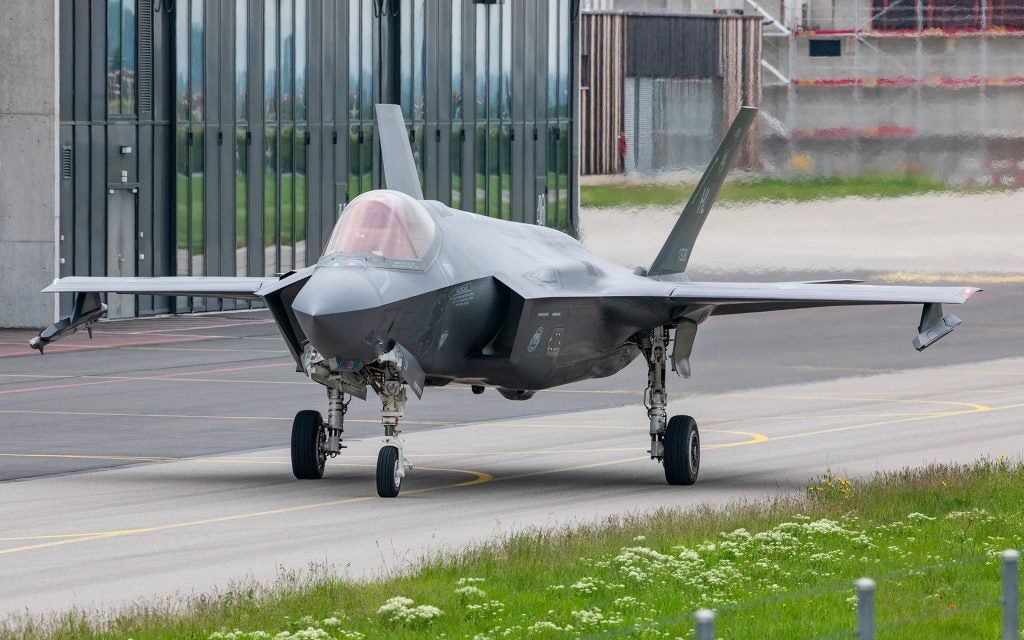Swiss Federal Council Selects F-35A For Next Swiss Fighter
Swiss Defense Minister Viola Amherd announced today that Switzerland’s Federal Council has selected Lockheed Martin’s F-35A Lightning II as the country’s next fighter aircraft as part of the Air 2030 program. Today’s announcement brings to an end over two weeks of increasingly heated speculation regarding the winner, following a series of leaks regarding competitors that were supposedly in the lead to replace the Swiss Air Force’s F-5 Tiger IIs and F/A-18 Legacy Hornets, including the F-35.
In a press conference following a Federal Council meeting earlier today, Amherd said that the Federal Council would seek parliamentary approval for the purchase of 36 F-35A jets. The selection, she said, was due to the F-35A having achieved the highest score of the competing aircraft, with a “clear gap” between it and other contenders, with the next closest competitor scoring 95 points less than the F-35A’s 335 point score. The F-35A was described as having led in three out of four main criteria, being aircraft effectiveness, support, and cooperation.
The F-35A’s “pronounced technological advantage” led to the Swiss government deeming it more effective than Boeing’s Super Hornet, Airbus’ Eurofighter and Dassault’s Rafale. The F-35A’s data fusion capabilities facilitates “information superiority”, allowing Swiss F-35 pilots to have superior situational awareness over the competition, which the government says is especially useful for regular air policing. The stealthy nature and resulting high survivability of the F-35A is described as a “particular advantage” for the Swiss Air Force, while advanced simulators allow for 20 percent fewer required flight hours than other competitors, as well as 50 percent fewer takeoffs and landings than the Swiss Air Force’s current inventory. As the newest of the candidates, the Swiss government also says that the F-35A is likely the most capable of retaining its technological advantage over its expected 30 years of Swiss service, a “great advantage” over other contenders.
The advanced simulators also contributed to the F-35 being evaluated as the best supported aircraft. Other contributing factors include high efficiency in operations and maintenance, as well as security of supply throughout the aircraft lifespan. These advantages are said to be due to the F-35A having the largest production run of the contenders, as well as the largest number of European operators of the aircraft.

The Swiss evaluation also concluded that the F-35 offered the best opportunities for cooperation, with “comprehensive opportunities for industrial collaboration” including aircraft repair and maintenance by RUAG Switzerland, and broad access to data and technical resources. However, the F-35 offer did not provide the best direct industrial offset package, with the Swiss government noting that offsets of 60 percent of the order value must be “fully fulfilled” no later than 4 years after the last F-35 is delivered.
Additionally, the F-35 was described as the “clear winner” on cost grounds. The Federal Council’s press release states that the procurement costs of the 36 F-35s per the final offers made in February 2021 would be 5.068 billion Swiss Francs (~$5.5 billion), well within the authorized budget of 6 billion Francs even after adjustment for inflation by the time payments conclude. Total procurement and operating costs are said to amount to around 15.5 billion Francs over 30 years, 2 billion Francs less than the nearest competitor.
Amherd stressed at the press conference that a “correct, clean and comprehensible” evaluation process was important to her, with the Federal Council having commissioned Zurich law firm Homburger AG to audit the methodology of the evaluation, award criteria and the financial assessment of the tenders. Following the audits, Homburger came to the conclusion that Swiss procurement agency Armasuisse’s cost-benefit analysis used in the evaluation report was plausible. Responding to press inquiries, Amherd said that the government would not resort to “backroom deals” to convince the Swiss parliament to approve of the F-35A procurement, and that the reasoning for the selection would be explained to the populace.
The minister also stated that there was no room for political influence in the council’s decision, saying that if the Federal Council had not wanted to buy aircraft from certain countries in order to curry favor with others, the aircraft would not have been evaluated at all. She added that she had been thanked for the “clean” procurement process of the aircraft, as the framework conditions of the program had been clearly communicated to all participants.
According to Amherst, while the risk of increased technological dependence on the United States had been evaluated, it was found that all of the contenders utilized American-made components. As a result, F-35A procurement will not increase Swiss technological dependence on the US. The Federal Council also stated that while all candidates met Swiss data autonomy requirements, the F-35A’s cybersecurity proved to be the best of the candidates due to the design of its computer architecture and cyber protection measures.
Bridget Lauderdale, Lockheed Martin’s vice president and product manager for the F-35, said:
“We are honored to be selected by Switzerland and look forward to partnering with the Swiss government, public, air force and industry to deliver and sustain the F-35 aircraft.
With the selection, Switzerland will become the 15th nation to join the F-35 program of record, joining several European nations in further strengthening global airpower and security.”

Also selected today was Raytheon’s Patriot surface-to-air missile system for the ground-based air defense component of Air 2030. The Federal Council says that in comparison to Eurosam’s SAMP/T system, Patriot performed better in all criteria, while again proving to be significantly cheaper than SAMP/T. Five Patriot batteries will be procured to cover 15,000 square kilometers.
The Group for a Switzerland Without an Army and allied political parties have now announced that they will be launching a popular initiative against the F-35 procurement. With a referendum on the procurement of fighter aircraft already having been narrowly approved in September 2020, a popular initiative will require a double majority of both voters and cantons voting against F-35 procurement in addition to parliamentary approval, drastically raising the effort needed to reverse the referendum outcome.

